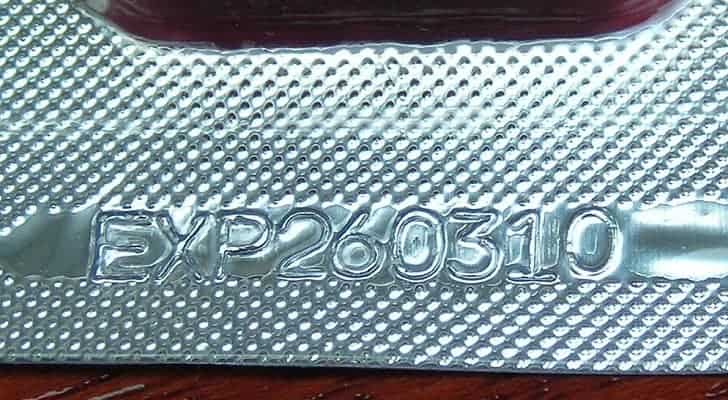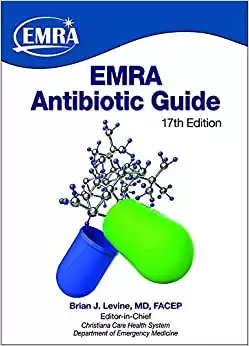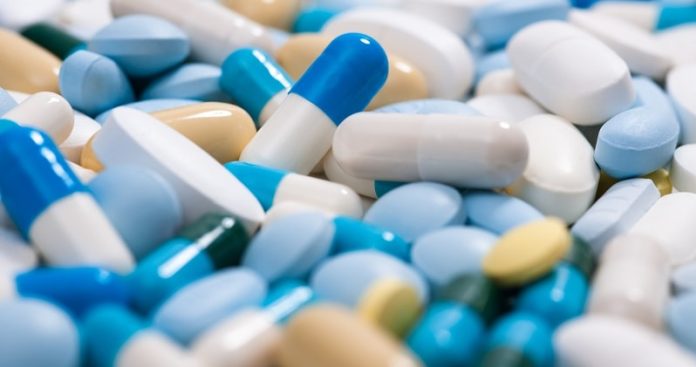There is a lot of controversy and confusion in the disaster prepping community on the use of fish antibiotics in humans.
If you are thinking of stockpiling them in your Just-In-Case supplies, here is what you need to know.
Are Fish Antibiotics the Same As Human Antibiotics?
When you shop for fish antibiotics, you’ll be surprised that most don’t come in powder or pellet form. Instead, they are pills or tablets.
How the hell is a fish supposed to take a pill???
These “fish” antibiotics aren’t actually meant for fish.
The sellers know that people like preppers want to get antibiotics without a prescription. Hence, they exploit a loophole in the law that allows them to market antibiotics for fish – even though they are the same pills for humans.
Right now, the FDA does not require a prescription for fish antibiotics.
What is the Difference?
For an antibiotic to work correctly, it isn’t enough to contain a particular ingredient (such as Penicillin). The antibiotics also must be formulated to ensure absorption in the patient and absorption in the right place.
For example, antibiotics for cows (which have 4 stomachs) will need to be formulated differently than those for humans.
As far as fish antibiotics go, you CAN NOT take powders or pellet forms of the antibiotics and expect them to be effective on humans. These are meant for fish.
However, if you see pill or tablet antibiotics marketed as “for fish,” these are human forms of medicines that have been labeled for fish to get around the prescription requirement. I feel bad for any pet owner who mistakenly buys pill forms of antibiotics for their fish!
How can you be sure that the fish antibiotics you buy are meant for humans?
Read on…
FDA Labeling Requirements

I’ve bought fish antibiotics from several stores to see what I would get. When the packages arrived, I opened them to check out the pills. Small letters and numbers were on the drugs, aka “Imprint Codes.”
I suggest you read this article on Drugs.com about Imprint Codes. In summary, the FDA requires a unique imprint on all prescription and OTC medications. The purpose of the code is to make it possible to identify medicines. For example, if you drop your pillbox and all the meds go flying, you can identify the pills by their Imprint Code.
All Imprint Codes will identify the type of drug and its strength.
You can use this Pill Identifier tool to type in the Imprint Code of a pill and determine precisely what it is.
If you get pills that do not have an imprint code, then DO NOT TAKE THEM! Who knows what they contain and in what dosage?
If the pills contain an imprint code, you can be confident that they are the same pills used for humans.
As one fish antibiotic seller told Survival Doctor, the fish pills are the same as humans. They source the pills from a manufacturer that makes them for humans and repackage them as fish antibiotics.
Same Pills Doesn’t Always Mean the Same Quality
So, the fish antibiotics you bought are the same pills sold to humans. That means they are safe to use, right?
Not necessarily.
Drugs made for animals are not held to the same standards as those made for humans.
For example, there are strict regulations about how human antibiotics must be packaged, stored, and shipped. In an extreme case, the fish antibiotics you buy could be contaminated with protozoan or microbes. However, a more likely scenario is that poor storage conditions could have caused the antibiotics to deteriorate and lose effectiveness.
You are taking a risk whenever you buy fish antibiotics for human use. You can’t be 100% sure the antibiotics are safe.
What Does “USP Standard” Mean?
Animal medications aren’t held to the same standards as human meds, so you are taking a risk by taking fish antibiotics.
Some sellers try to instill confidence in the buyers by slapping labels on their products. One of the most common is “Made According to USP Standards.”
The United States Pharmacopeial Convention (USP) is a nonprofit organization that sets medication standards. These standards are used in over 140 countries. Any human drug sold in the United States must meet USP standards.
Here’s the thing: USP has not verified a single fish antibiotic!
Again, I emphasize that the pill ingredients might be the same as those sold for humans, but it doesn’t mean it is the same quality.
For example, the fish antibiotics could have been stored in a way that allowed mold to grow. Or maybe moisture levels were too high and destroyed the pills.
You might also see labels like “Pharmaceutical Grade” on fish antibiotics. However, like with the USP label, this doesn’t mean anything.
Dosage
Dosage is simple; it is the same; 500mg of fish Penicillin is the same as 500mg of human Penicillin. 500mg of fish mox is the same as 500mg of human Amoxicillin, etc.
Here are some of the most common fish antibiotics you will find for sale online. Remember, always check the Imprint Code on the pills!
The most common ones for human use are Fish Pen (Penicillin) and Fish Mox (Amoxicillin)
- Fish Pen = Penicillin – Buy Online
- Fish Mox = Amoxicillin – Buy Online
- Fish Flex Forte = Cephalexin – Buy Online
- Fish Zole = Metronidazole – Buy Online
- Fish Cin =Clindamycin
- Fish Cillin = Ampicillin
- Fin Flox = Ciprofloxacin – Buy Online
Expiration Dates

You need to know the expiration dates if you plan on stockpiling fish antibiotics for SHTF disasters. Just like with your food stockpiles, antibiotics can go bad.
Most antibiotics you find will have an expiration date of about 1 to 5 years. However, most antibiotics will probably still be good well after their expiration date.
A major study was done by the Department of Defense and FDA Shelf Life Extension Program. They tested 122 different products and found that most (88%) were good for at least 1 year after the expiration date, with an average of 5 years.
However, the test was done while the medications were kept in ideal conditions – away from heat, light, and moisture and in original packaging. Most fish antibiotics for humans are generic drugs that have been repackaged, so they aren’t in the ideal conditions.
In most cases, taking an expired antibiotic won’t harm you directly. It just means that the antibiotic will have lost its potency. However, this can be very dangerous because taking weak drugs can lead to mutations and antibiotic-resistant strains of bacteria. So, you would still be sick with a resistant strain of bacteria!
In other cases, taking expired antibiotics can directly harm you. The most notable example is tetracycline (Fish Cycline). It may break down into a toxic substance, so be careful!
Should You Buy Them?
First, I want to say that self-medicating is ALWAYS a bad idea! Viruses and not bacteria cause most illnesses, so taking antibiotics doesn’t help.
Overuse of antibiotics is causing mutant strains of antibiotic-resistant bacteria, so we should be wary about taking antibiotics.
Further, would you even know which antibiotic to take if you got sick? If you are thinking of stockpiling antibiotics, you better get a medical guide to go with them.
EMRA Antibiotic Guide
One option is the EMRA Antibiotic Guide, but I’ll warn you that it can be confusing if you aren’t a medical professional.
EMRA Guide

EMRA Antibiotic Guide, 17th Edition
The perfect pocket guide for antibiotic use. Be warned; it can be pretty confusing to make sense of if you aren’t a medical professional.
Before I’d take fish antibiotics, I would first go through my other options, such as natural remedies like herbal antibiotics. This is a lot safer than self-medicating with drugs that might be expired or contaminated.
But we aren’t talking about using fish antibiotics for everyday use. We are talking about stockpiling fish antibiotics for SHTF situations where you have no other options.
In an actual SHTF situation, the risk of bacterial diseases will skyrocket.
Do you want to die because you got a minor infection from a cut on your hand or similar but had no medications?
So….
Go ahead and stockpile fish antibiotics as part of your disaster prepping – but only if you take these precautions:
- Research antibiotics, when they should be used, and how they should be used.
- Buy a good antibiotics guide to keep with your stockpile.
- Only buy fish antibiotics from a reputable source. eBay is NOT reputable!
- Check the imprint codes on the antibiotics so you know exactly what it is. Don’t store fish antibiotics that don’t have imprint codes.
- Store your antibiotics in the ideal conditions. This usually means in the refrigerator and never in the bathroom medicine cabinet.
- Rotate your stockpile of fish antibiotics, so they don’t expire.
Here is where I need to make a disclaimer that I am not a doctor and none of this should be construed as medical advice! I am just a concerned citizen like yourself who wants to be prepared for disaster by making sure to have life-saving antibiotics if necessary.
Are you stockpiling fish antibiotics? What’s your SHTF medical plan? Let us know in the comments.









